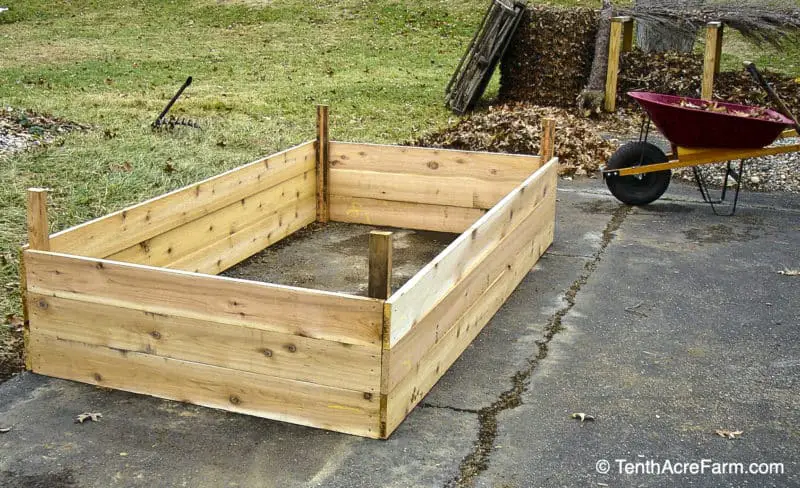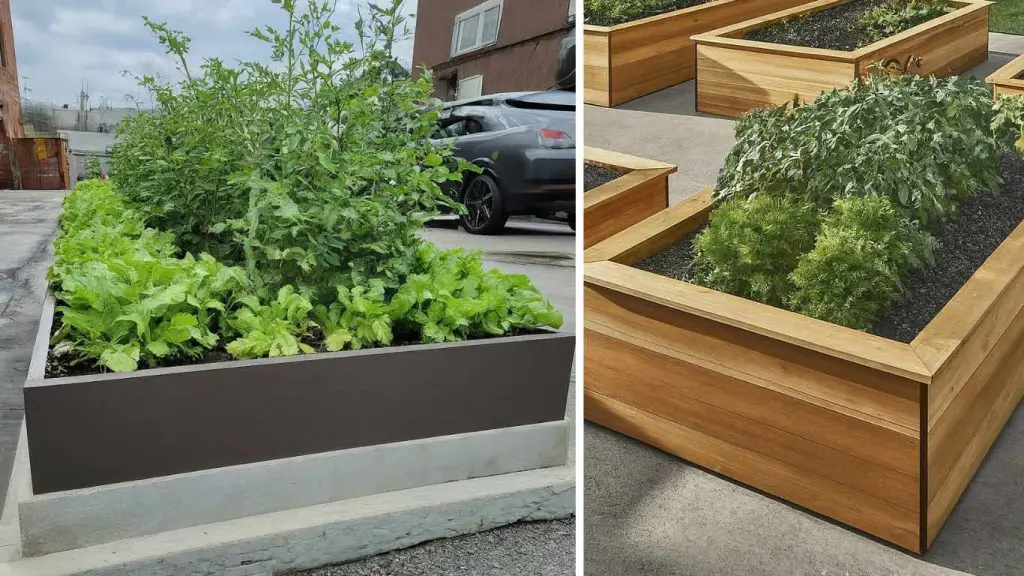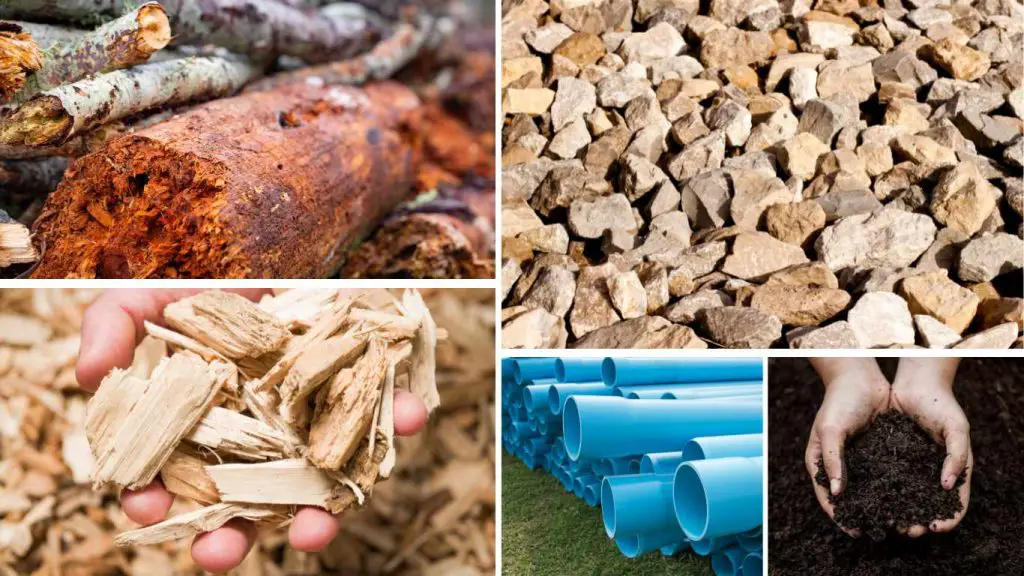Have you ever wished for a garden but were forced to live in a concrete jungle instead? You can still grow beautiful flowers and tasty vegetables, so don’t worry! Small spaces are ideal for raised garden beds, and guess what?
On that patch of concrete, we can construct one. However, there’s one thing to consider before planting: what do I put on the bottom of a raised garden bed on concrete for the health and growth of our plants?

Now let’s investigate the best way to fill our new raised garden bed with fantastic drainage and better growth of plants.
First Thing First: We Need Tall Beds
When you are constructing a raised bed on concrete, it is essential to have a solid understanding of the significance of depth. If you think of your plants as guests staying in a hotel room, you should imagine that the deeper the bed, the more room they have to stretch out and get comfortable. Especially when you are building one on top of concrete.
Your plants will be able to develop stronger roots if you provide them with a deeper bed, which will assist them in remaining upright rather than falling over. Having a solid foundation for a building is analogous to this practice because it ensures that everything remains sturdy and stable.

Additionally, a deeper bed is better able to retain water, which means that you will need to water your plants less frequently. Additionally, because the roots have more space to spread out, they can locate a greater quantity of nutrients in the soil. This means that you will not need to apply as much fertilizer.
Consequently, to provide your plants with the best possible opportunity to flourish, I recommend that you construct a raised bed on concrete that is at least 24 inches tall, but ideally 32 inches tall.
What Do I Put On The Bottom Of A Raised Garden Bed On Concrete?

Before adding soil to your raised bed garden, it is important to add a few things at the bottom because your beds are on top of concrete. Here is a list of a few things that might help you succeed:
1. Gravel layer:
When layers of gravel or stone are added to the bottom of a raised bed that is constructed on top of concrete, they serve multiple purposes to improve drainage, including the following:
Preventing waterlogging: The presence of gravel or stones in the soil creates air pockets, which in turn allows excess water to drain away from the roots of the plant. In this way, waterlogging is prevented, which is beneficial because it helps prevent root rot and other moisture-related problems.
Improving soil structure: An environment that is more porous is facilitated by the presence of stones or gravel at the bed’s bottom. This improves the overall structure of the soil by allowing water to pass through it more easily and avoiding compaction.
Aiding in aeration: The pathways that allow air to circulate within the soil are provided by the spaces that are created between the stones or gravel. A sufficient amount of aeration is essential for the health of the roots and the uptake of nutrients, as well as for the promotion of beneficial microbial activity in the atmosphere.
Preventing soil compaction: The use of gravel or stones in the raised bed helps to prevent the soil above from becoming compacted over time. This is accomplished by providing a layer of drainage material at the bottom of the raised bed. Because of this, the roots of the plant are able to become more deeply embedded in the soil and gain access to nutrients more efficiently.
2. Dead Wood Logs:
Dead wood logs can be especially useful when they are utilized in a raised bed that is placed on top of concrete, specifically in situations where it may be difficult to retain moisture. This is how they can contribute to alleviating this problem:
Moisture retention: Logs that are dead and rotting soak up water from the ground and air around them. In a raised bed made of concrete, where water may drain quickly because the surface is not permeable, the logs can help keep the soil moist.
This gives plants a more steady supply of water, so they don’t need to be watered as often, and it keeps the soil from drying out too quickly.
Slow-release nutrients: In the course of their decomposition, the dead wood logs produce nutrients that are then released into the soil. The soil is naturally enriched as a result of this process, which supplies the soil with essential elements such as nitrogen, phosphorus, and potassium to support the growth of plants.
In a raised bed on concrete, where the soil may be deficient in organic matter and nutrients, the addition of dead wood logs helps to replenish these essential nutrients, which in turn promotes plants that are healthier and more productive.
Improvement of soil structure: Furthermore, deadwood logs have the ability to enhance the structure of the soil by forming channels and spaces within the soil.
This results in improved aeration and drainage, which in turn makes it easier for plant roots to penetrate the soil and gain access to water and nutrients inside the plant.
In a raised bed on concrete, where soil compaction and poor drainage may be problems, the presence of dead wood logs helps create a more hospitable growing environment for plants. This is why the presence of these logs is especially beneficial.
3. Wood Chips:
If you can’t find logs, wood chips can be used in the same way. They help keep water in the soil and break down slowly, adding to its nutrients over time. But they might not be able to keep water in as well as logs.
Wood chips can be used in the same way that dead wood logs are. They help keep water in the soil and break down slowly, adding to its nutrients over time. But they might not be able to keep water in as well as logs.
4. PVC Pipes:
An additional technique to improve drainage in your raised garden bed built on concrete is to install drainage pipes or perforated PVC pipes. These pipes can aid in preventing water from collecting at the bottom of the bed, particularly in deeper beds where water drainage may be less effective. Deeper beds tend to experience this more frequently.
This can be especially helpful if you are growing plants that are susceptible to standing water or if you live in an area that receives a lot of rainfall.
Related Article:
- Everything You Need To Know – What To Put At The Bottom Of Raised Bed?
- Plastic Raised Garden Beds On Legs – How To And What To Grow In Them
- Everything You Need To Know About Preparing A Garden Bed For Planting Vegetables
5. Drill Holes:
Drilling holes in the concrete is another crucial step to take into consideration if you want to improve drainage in your concrete-raised garden bed. This step may prove to be very beneficial even though it is not necessary, especially if the concrete surface is relatively impermeable.
Drilling holes can help keep water from getting trapped beneath the bed, which can cause waterlogging and other issues with the roots. This prevents extra water from becoming trapped and lets it escape.
It’s possible that this small addition will have a big impact on how well your plants are able to maintain ideal moisture levels, which will ultimately guarantee their longevity and health.
Note: In the event that your raised bed is situated on top of the pavement or another surface, it is necessary to drill holes. On the other hand, you should not drill holes if the raised bed is situated on top of the roof or if there is something else that should be considered significant.
6. Hight Quality Soil:
Putting good soil in the raised bed is very important for keeping your plants healthy and strong. This is because the soil gives plants the nutrients they need to grow and develop strongly.
By adding compost or other organic matter to the soil, you can improve its structure and fertility. This makes the soil nutrient-rich, which is good for root growth.
It is important for plants to have strong roots so they can get water and nutrients from the soil and stay put. You can help your plants grow strong root systems that can handle environmental stresses and protect them from diseases and pests by giving them good soil.
It is especially important to buy good soil for a raised bed on top of concrete, where the soil may not be in the best shape. The soil is what your garden is built on, and even though the concrete base can be hard on plants, it gives them the right conditions to grow.
When you fill your raised bed with nutrient-rich soil, you create a great environment for your garden that helps it grow and produce lots of food, even though it’s on top of concrete.
Related Article: Best Raised Bed Gardening Soil Mix Recipe

